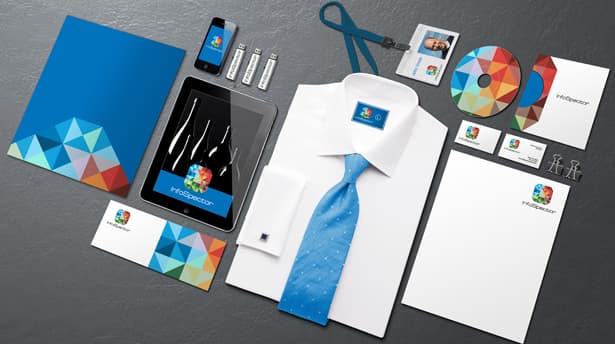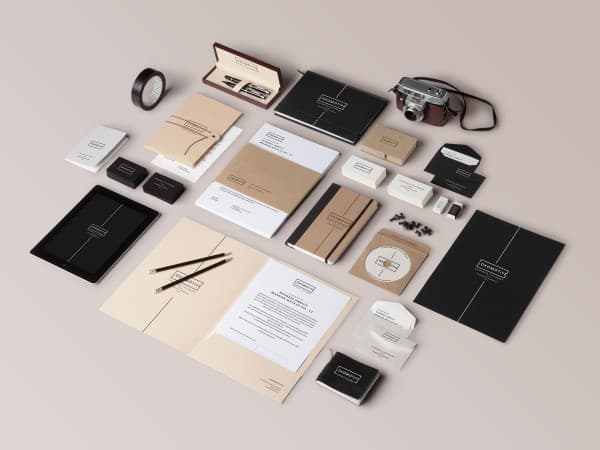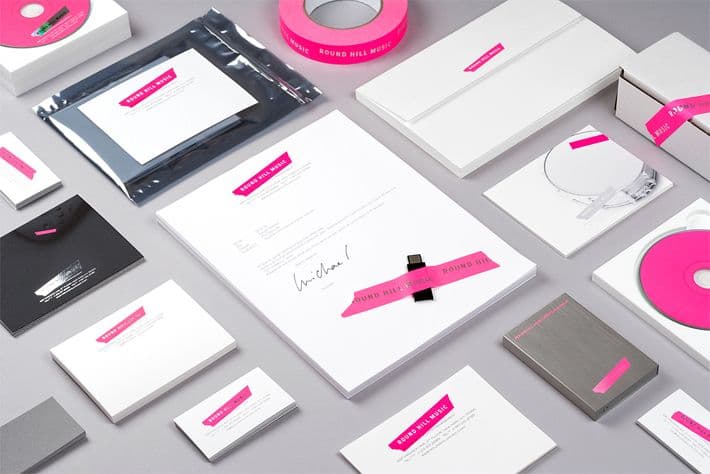Table of contents
Reading time: 6 minutes

Identity (brand ID, corporate ID) is a corporate identity, a visual component of any brand. More precisely, this is a collection of certain details created by the company for a certain image in the eyes of people. Creating a corporate ID involves developing a logo, slogan, fonts, etc. This is what makes the company famous.
What does it consist of?
The most important thing, as many say, is the logo. Usually consists of 1 - 3 colors, do not overdo it. Also make such an emblem so that its style does not become outdated in six months.
The second item is business cards. Nothing superfluous should not be, everything should be in maximum quantities. It is best to write phone numbers, opening hours, website, office location and insert a logo. Forms for work or some kind of contract must have the same logo and contacts.
Five carriers of the identity
- Site
Most likely, the company has a web page where it is necessary to place branded fonts, shapes and colors.
- Packaging
This includes: bags, boxes and envelopes.
- Souvenirs
T-shirts, cups, pens, paper with an emblem, such products are found only in well-known brands.
- Signboard
The first thing a buyer sees is usually the company name and logo.
- Showcase
Identity will emphasize the impressiveness of the business if it is placed on the showcase.

What kind of identity would work well?
One of the most striking factors is the color palette. Remember that people associate some of the colors with warmth and comfort, and some vice versa. Therefore, you need to be able to combine shades so that consumers want to use the services of the brand. Orange, red, brown and yellow are more youthful and bold colors. But blue, green and black are more subtle, but they are found on almost every turn. Purple is associated with wealth and power, which is why companies working in the premium segment choose this particular shade. Pink is usually used in Weidenkah for companies that produce cosmetics or any women's accessories. Often the font is striking. The more extraordinary it is, the better!
There are four font categories to consider when creating a brand ID:
- Serif font
Fonts with legs are often used to create a classic, unobtrusive identity. In people, most often, it is associated with calmness.
- Handwriting
This is suitable for luxury or women's products.
- Decorative fonts
To declare your originality, you should choose this font, because each has a clear difference. Some even have rounded corners.
- In sans-serif fonts
The complete opposite of the first point. Shape is also important in creating an identity. Icons in the form of a circle or some unusual shape will look more presentable than a square with right angles.

Most often, people turn to special companies, but you can also do it yourself. It is possible to attract freelancers, because their prices are cheaper and the turnaround time is faster. But if you do it yourself, you should follow these points:
- Analysis
It is worth looking at the identity of competitors, as well as analyzing the market and its trends. Thanks to this, in about 1-3 weeks, you can draw up an approximate view, for example, emblems.
- Concept
After the results of the previous paragraph, two to four layouts are created in order to choose the best one. The main task is to convey positioning through graphic elements.
- Naming
Next, the name of the company is developed, it should be unique and memorable.
- Logo
Should look good in all customizations, and be consistent with the company's font and theme.
- Brandbook
A document that describes the most important thing about the company. This knowledge is used to build successful communication with customers.
Six types of identities
- Traditional
This is a clear logo with some kind of sign symbolizing the company (for example, Apple has an apple, Nike has a bird, etc.). When developing such an identity, only modular grids are used. Due to its integrity, it is suitable only for those who have already thought out contract points.
- Dynamic
Reduced number of elements, style. Transformation for any object is also possible. Each time when using the identity, the owner has to make a new layout or modify something in the past (for example, the American Apparel brand is an inscription, but provocative pictures help users pay attention to the campaign. But Agropromsnab simply shortens or lengthens the yellow line ).
- Polymorphic
The transformable logo is an identity feature. Most importantly, stay within the same graphic solution. For example, the Pear store changes the content of the fruit on different web pages of the site, but the DeDe online store changes the red dot into a rectangle, square or rhombus depending on the page.
- Verbal
This is a slogan, text, or even a descriptor. For example, the company "Something" covers with a white rectangle the part of the text where the word-name of the brand should be. The Australian Opera has the first two letters moving apart.
- Identity of meaning
The complete opposite of the last paragraph. Because the emphasis is on the image and a minimum of text. Most often these are unique masterpieces of art. For example, a company like "i'way" shows all the types of transportation they carry out.
- Mascots
This is a brand-character. Often a company is built around it, and it also reflects the nature of the company. For example, the Milka chocolate company chose a cow as its mascot. And here is the company "Duracell" rabbit.



















